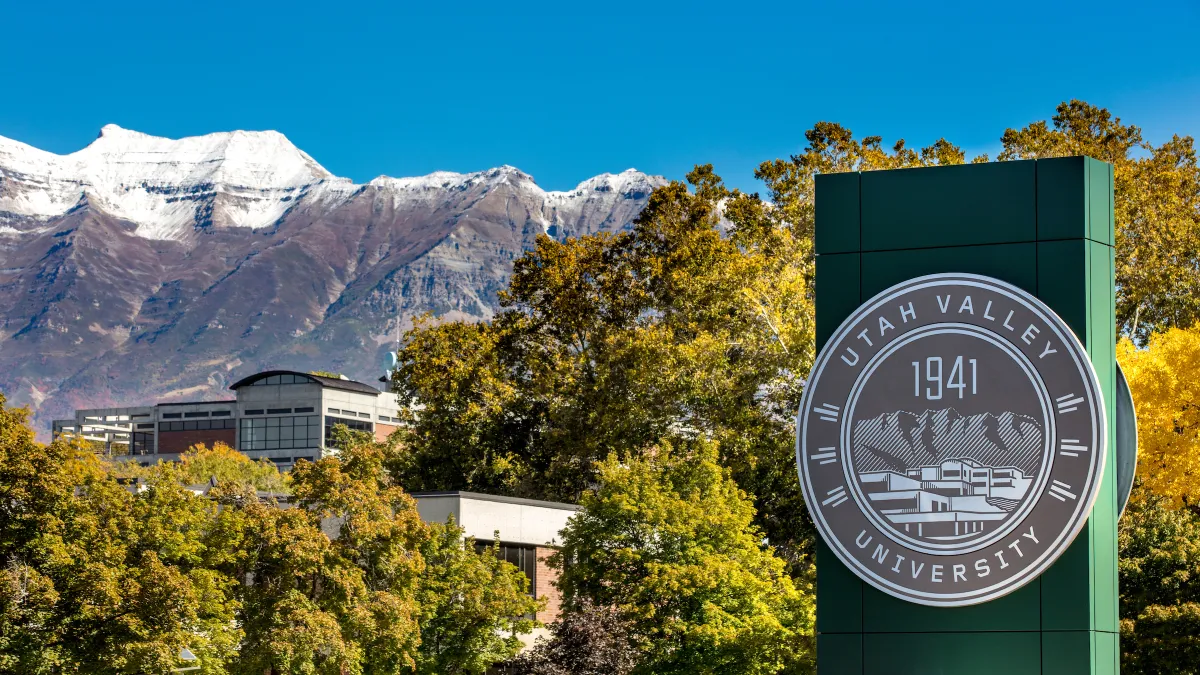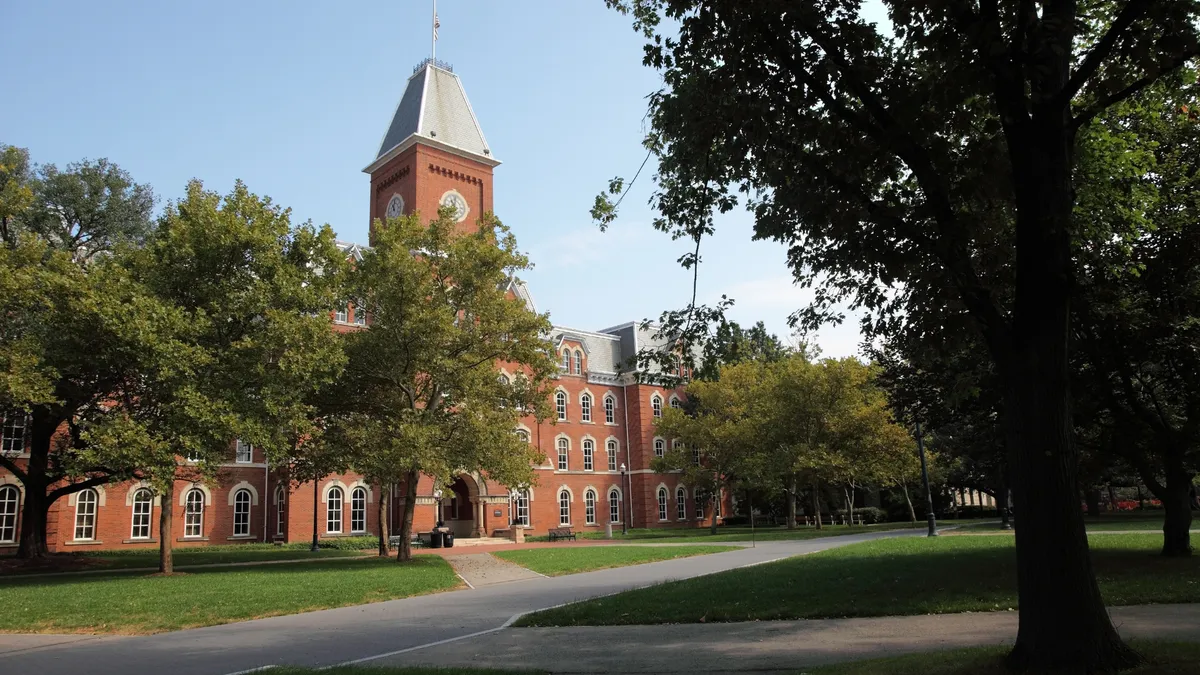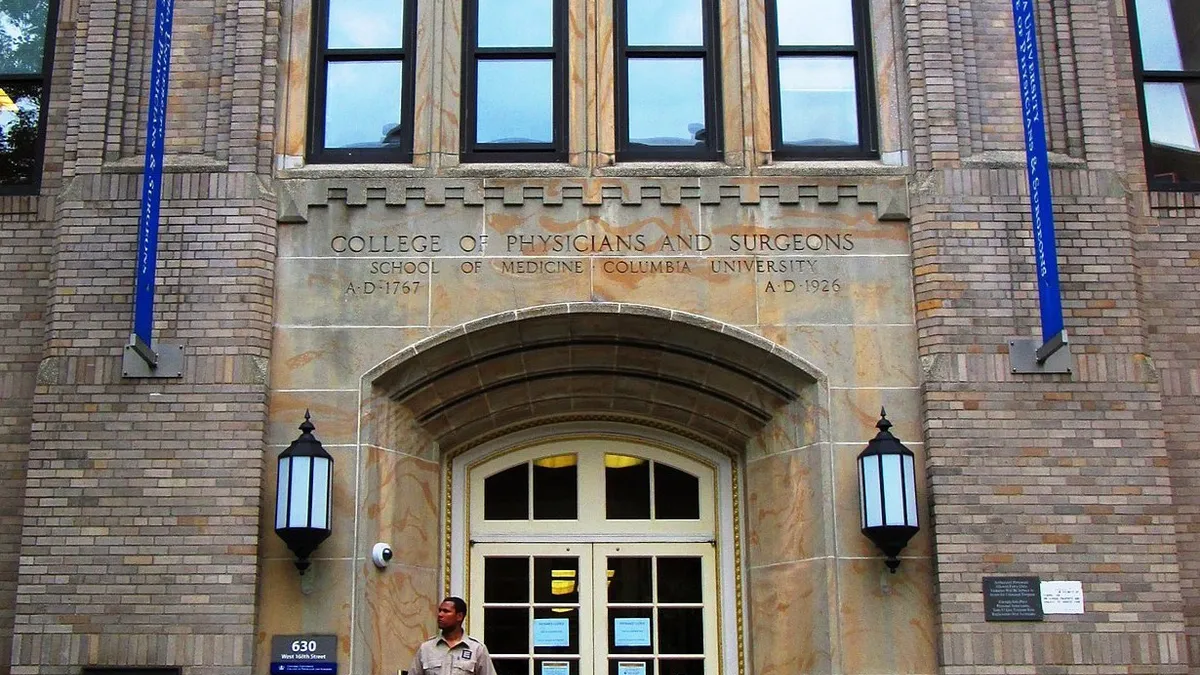Astrid Tuminez is the president of Utah Valley University, a dual-mission public institution in Orem, Utah.
This has been a tumultuous year for higher education. The Varsity Blues scandal rocked some of America's oldest and most elite universities before existential budget crises and discrimination lawsuits made headlines from Anchorage to Cambridge.
In most cases, the controversies were not an indictment of the schools they afflicted so much as microcosms of larger trends in declining enrollment and rising elitism that, for some, have turned higher ed into a commoditized status symbol.
But in my experience as president of Utah Valley University, the largest public university in Utah, the vast majority of students still see higher ed much the way they always have: as a powerful means to learn the fundamentals necessary to contribute meaningfully to our workforce and citizenry in an informed, lasting and engaged way.
We believe that anyone who shares this belief — regardless of educational background, age, race, religion or life circumstances — is welcome at UVU, where we operate as an open-enrollment, dual-mission institution with a community college and teaching university under one roof.
This fall, more than 41,000 students enrolled at UVU, including 12,000 concurrent-enrollment high school students. In doing so, they chose to participate in one of the nation's most inclusive and affordable education models.
The dual-mission model has long been effective and popular in Utah. UVU — along with the state's two other dual-mission institutions, Dixie State and Weber State universities — educate nearly half of all Utah residents enrolled in the Utah System of Higher Education (USHE). These dual-mission schools also account for 64% of USHE's total enrollment growth since 2000. In 2018, Utah's three dual-mission institutions awarded close to 50% of associate and almost 40% of bachelor's degrees in the Utah public higher ed system.
Students have gravitated toward UVU's dual mission because it is both flexible and affordable, thus alleviating two of the most common roadblocks Americans face today in their quest for higher ed. When we talk about flexibility at UVU, it isn't just that we offer training certificates and associate, bachelor's and master’s degrees all in the same place.
We are flexible because we make it easy for a student to progress through these degrees at their own pace — both on campus and, increasingly, online — through what we call "stackable credentials." These pathways have made UVU a particularly popular choice for "nontraditional" students, as 32% of our students are age 25 or older.
We have middle-aged students studying to finish associate degrees they started over 10 years ago, perhaps before life circumstances forced them to stall their education. We also have students who came to UVU to earn an associate degree but along the way decided to progress to a bachelor's degree. We know the process of transferring credits between schools has been a tremendous headache for students around the country, often resulting in a "transfer trap." The dual-mission model makes it easier for students to ensure their hard-earned credits are counted as they "level up" from one degree to the next.
And, in a time when the national discussion around higher ed starts and ends with unprecedented tuition costs, we are proud that UVU's per-semester tuition is under $3,000, while extensive financial aid means the average UVU student pays less than $1,700 annually in out-of-pocket tuition costs.
Our dual mission as an integrated community college and teaching university enables us to share educational resources across the campus, such as faculty and advising services as well as technology infrastructure. That ultimately allows us to pass on cost savings to our students as well as to the state.
Despite the many benefits this model brings to students in Utah (and other states like Wisconsin, Florida and Washington that are employing similar models), we still face stigmas from the prevalent elitism in higher ed.
Some think the community college element of our institution diminishes the quality of our four-year degree programs. To the contrary, we see it as an enhancement — and as our students move into the workforce, I know their work demonstrates the quality and rigor of a UVU education. A recent UVU survey showed that 93% of regional employers rated the quality of UVU's education as "good" or "very good."
I also know that UVU's trend of growth and campuswide efforts to improve outcomes for all types of students will outlast the contemporary reservations about higher ed's accessibility and inclusivity. By 2028, UVU is estimated to enroll 50,000 students across its degree programs, including concurrent enrollment in partnership with local high schools.
While this model isn't the solution for every institution in every region around the country, the dual mission is proving to be a credible antidote to the competition run amok that has caused some of higher ed's most deeply rooted issues.
Future students at UVU, like the thousands who came here before them, should be proud to be part of a higher ed movement that places access and affordability, upward mobility and inclusivity as its most prestigious pillars.
















